If you are like most Americans, you have in your home the key technology that helped the Allies win WWII. Of course, it serves a very different function in your home than it did back then.
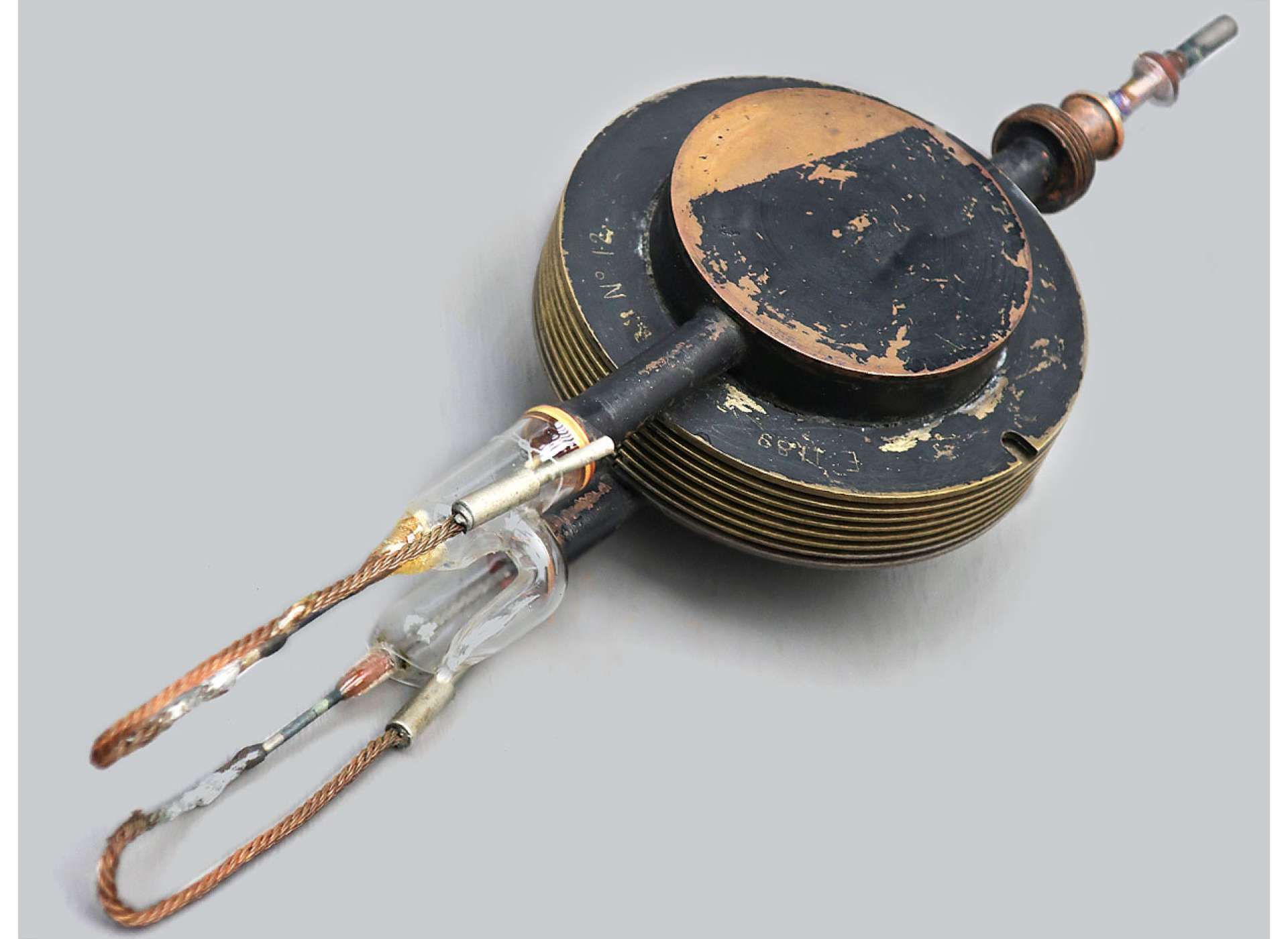
A WWII era cavity magnetron from a RADAR set. From the US Naval History Archives.
Your microwave oven holds a cavity magnetron. It is a relatively small metallic part that uses electrical current and moving magnetic fields to generate electromagnetic waves in the wavelength range that we call microwave. The very first cavity magnetron was developed in England in 1940, at the University of Birmingham. It could produce 100 watts of electromagnetic wave energy, with waves of 10 cm. How that little device got into planes and boats used by the Allies, and why it was so significant, is a really cool story.
Engineers had been making waves with magnets and electromagnetic currents for 4 decades by the time the cavity magnetron was developed. In the 1930s those waves could be generated by carefully designed vacuum tubes. These were made to generate and amplify electromagnetic waves in applications like Radio. Generating waves isn’t very useful unless you can also receive them, so many innovations were made in receiving waves as well.
The first attempts to send out and receive electromagnetic waves bounced off objects followed theoretical equations that James Clerk Maxwell make in the 1860s. Heinrich Hertz (whose name is used for the units of wave frequency) showed in his 1867 experiments that electromagnetic waves bounced off of metal surfaces and other conductors of electricity. Later experiments by Hertz and other scientists showed that the waves behaved just like visible light—they could be reflected, refracted and polarized. This led to the understanding that there is an entire electromagnetic spectrum of waves, that includes visible light and radio waves. Radio pioneer Gugliemo Marconi noted that radio waves were reflected back to his radio beacons on the Salisbury Plain in 1899. Over the next two decades he developed that technology, generating waves that could reliably reflect back, and suggested that they could replace lighthouses for navigation, or to avoid collisions between ships on stormy seas.
Beginning in 1915 Robert Watson Watt, a British meteorologist, started using radio signals generated by lightning strikes to track thunderstorms. His work led to use of screens (oscilloscopes) to display the fleeting signals from lightning. When the Air Ministry started researching air defense in the mid 1930s, with conflict in Europe seemingly inevitable, the Tizard Committee planned developments in electromagnetic technology to identify invading aircraft.
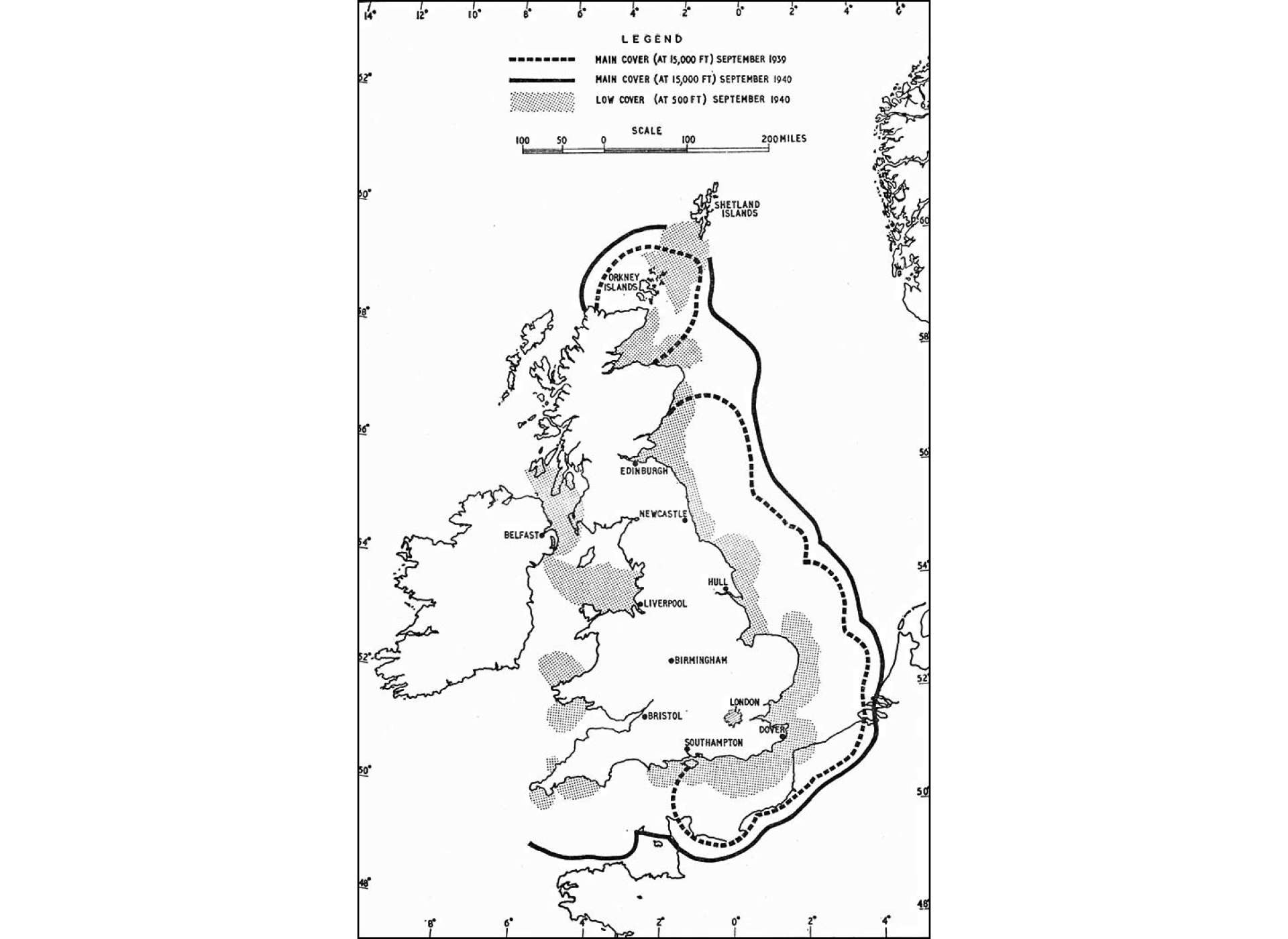
A map of the Chain Home RADAR system, set in 1938. From The Imperial War Museum.
Investment in this line of research led to the Chain Home Network—a radio-based detection and ranging system (RADAR) that covered the coastline of the country that faced continental Europe. This system, installed in 1938, used land-based transmitters, which were large and heavy, and receivers, which were much smaller, on aircraft. As Chain Home was installed, work continued on a detection system that did not depend upon ground transmission.
Chain Home had a couple of significant limitations. One was that it used longer wavelengths. Because objects must be larger than the wavelength used to observe it, this meant that Chain Home would miss smaller targets. The second was that the fixed transmission positions meant that identifying the location of targets was difficult. To be really effective, RADAR needed to be small enough to be mounted on airplanes and boats, and use a much smaller wavelength.
That’s where the cavity magnetron made it’s breakthrough. In 1940, during the height of German bombing campaigns over England, this device was created. It was smaller than a dinner plate, used a small antenna because of its short waves, and produced short wavelengths with high power. However, the bombing campaign over England, and the short supplies caused by its isolation against German controlled Europe, and German dominated seaways, made further development challenging. The British continued their own research and development, but shared the cavity magnetron with the United States. Engineers at the Massachusetts Institute of Technology’s Radiation Lab set to work making RADAR sets with the new technology too. From this point on in the war, the Allies had a huge advantage in RADAR over the Axis. Using captured technology, Germany systems were developed to identify waves from these systems and try to track the planes using them.
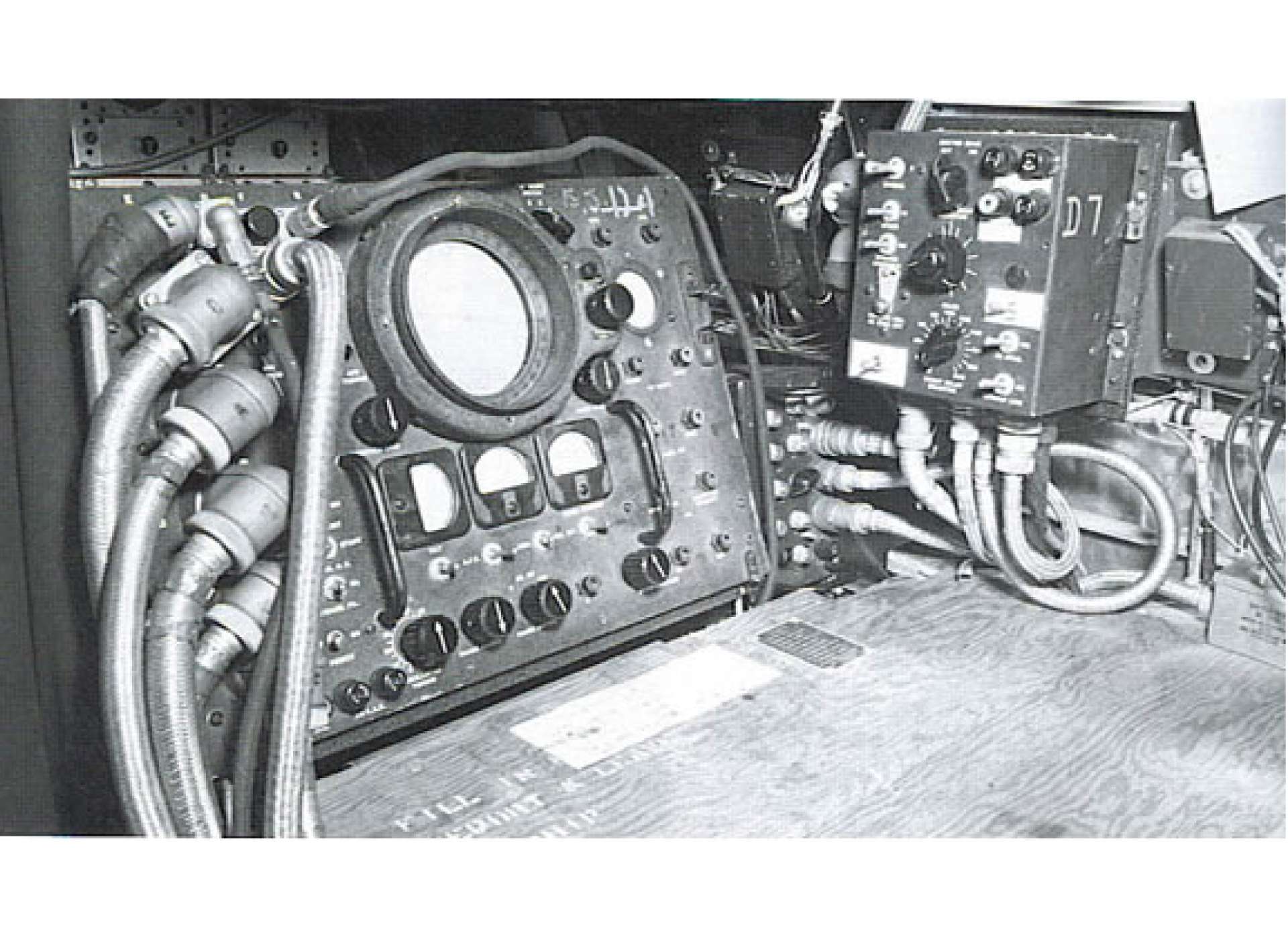
An image of the H2X operator station in an airplane. From the 482 Bomb Group, USAAF Archives.
In 1943 the US Army Air Force began using another system for Air-to-Ground RADAR. Designated H2X, this system used even shorter wavelengths (3cm) and thus higher frequency. Testing of H2X showed it could identify targets on the ground, eliminating the need for seeing targets to bomb them. Europe’s frequently cloudy skies had turned many missions back. The H2X was installed in B-17s and B-24s in place of the ball turret. They were used in Pathfinder missions, where the lead bomber, with H2X, would identify the target, and the other bombers would release their loads on its signal.
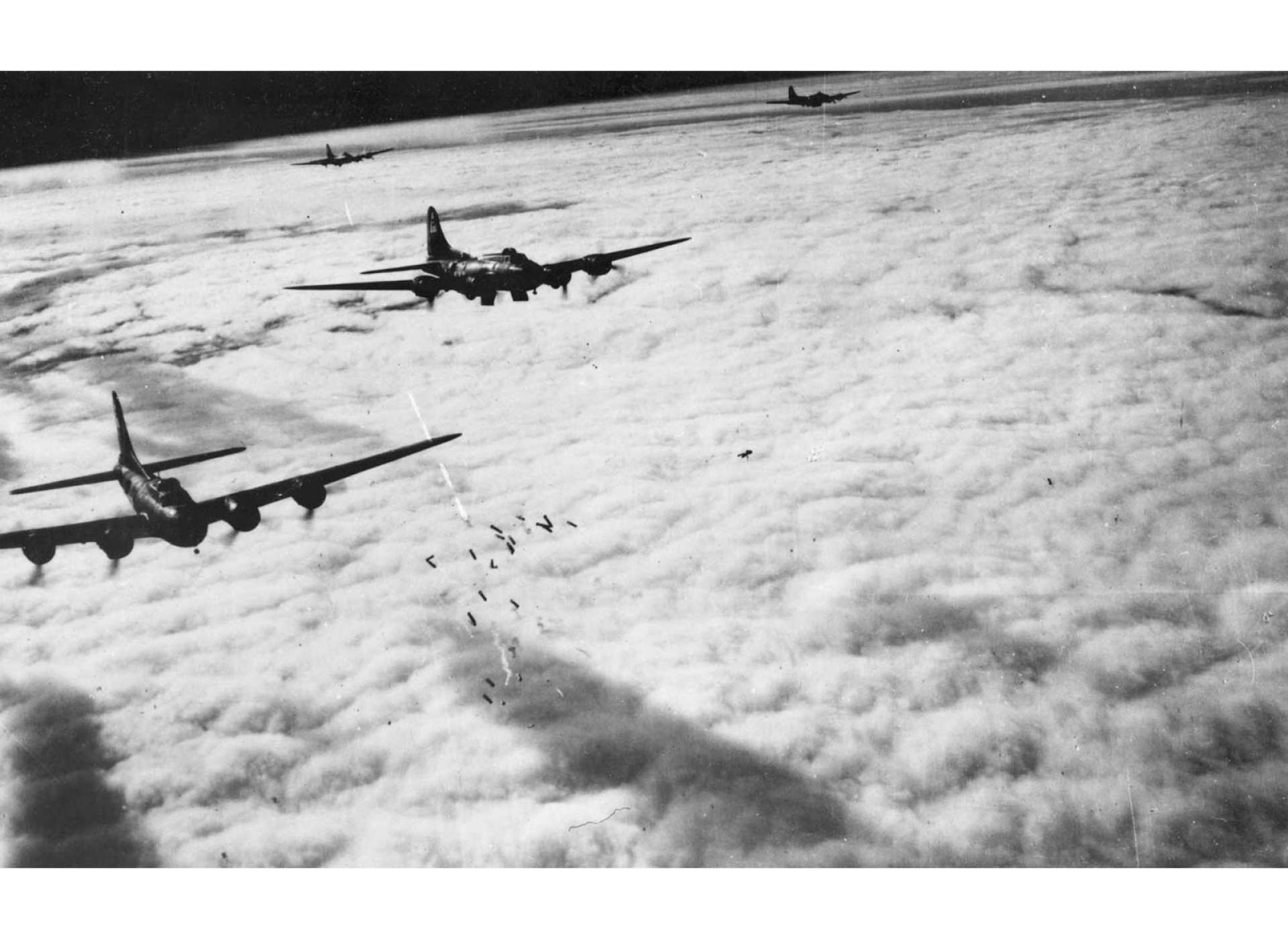
Boeing B-17s releasing their bombs on a flare path from a pathfinder aircraft. From the 482 Bomb Group, USAAF Archives.
In April and May of 1944 several de Havilland Mosquitos were equipped with H2X and used to map Germany. In night runs the radar screens were photographed for future use. The otherwise capable Mosquitos, with their wooden frames and older electronics, sometimes exploded when the RADAR overloaded the circuits, and missions using them in this way ended in 1945. Some P-38s were modified to carry the sets for them same reason, with an operator in a very cramped compartment in the nose.
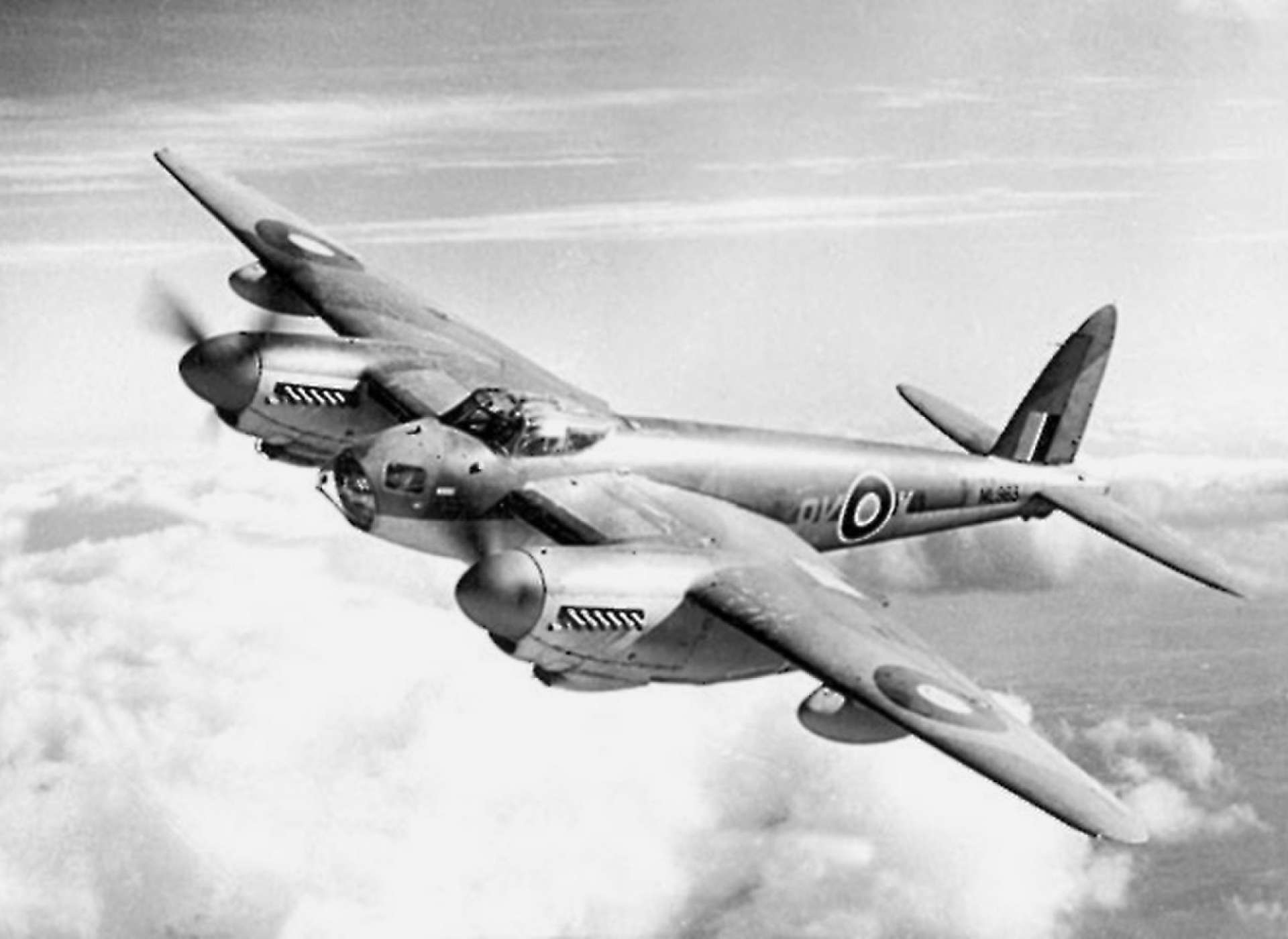
The deHavilland Mosquito was a very capable light bomber and reconnaissance plane, in spite of its wooden frame. From The Imperial War Museum.
Rob Wallace
Rob runs teacher workshops and develops curriculum, including Real World Science, funded by The Northrop Grumman Foundation.
Cite this article:
MLA Citation:
APA Citation:
Chicago Style Citation:

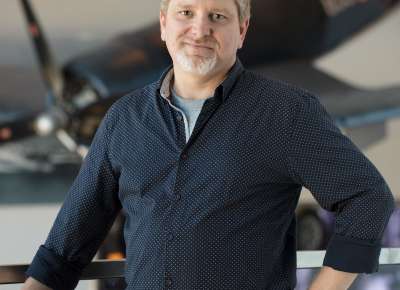
![Max Fuchs, New York City cantor, sings as Rabbi Sydney [sic] Lefkowitz, Richmond, VA, conducts the first Jewish services from Germany.](/sites/default/files/styles/max_650x650/public/2025-10/image1.jpg)






